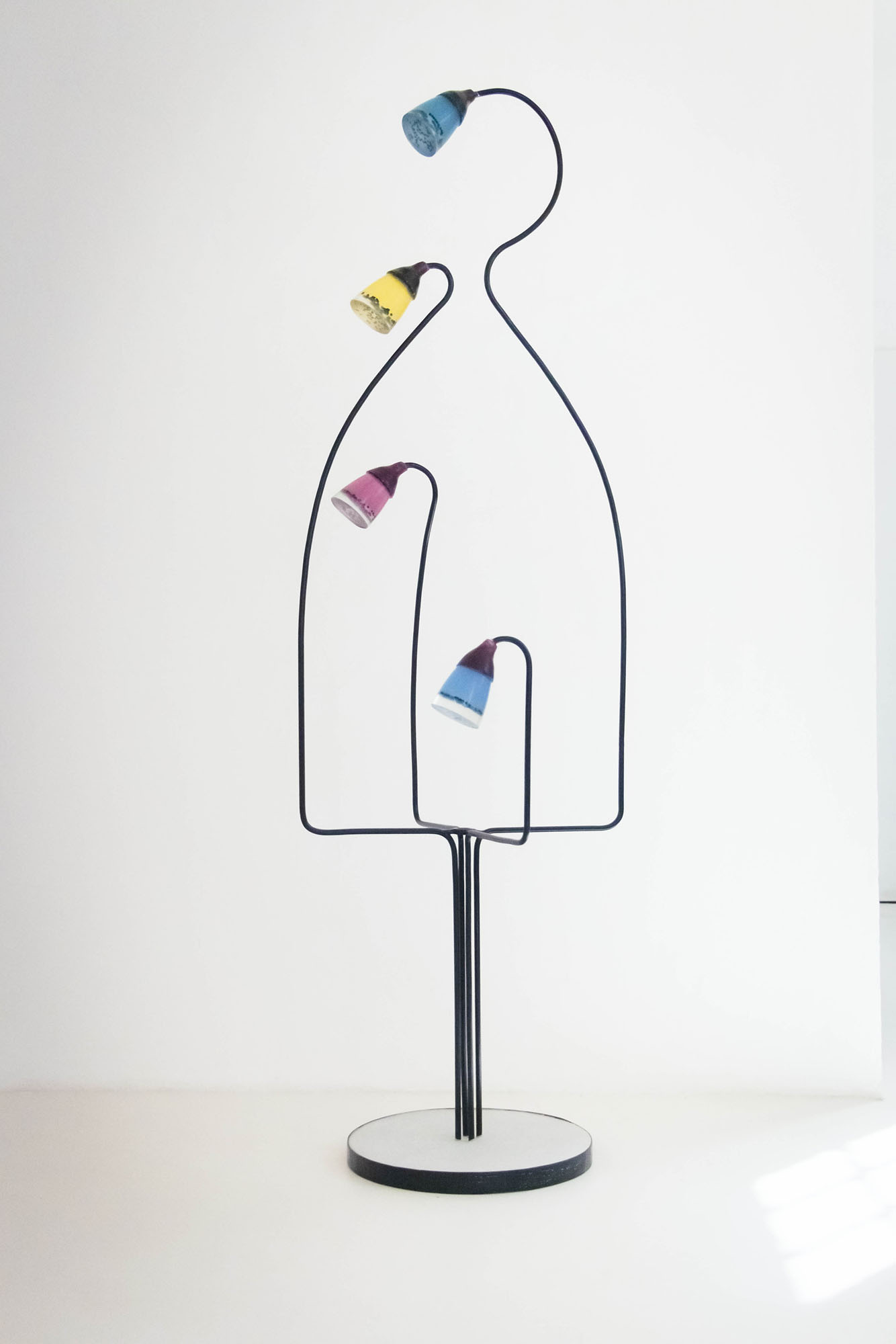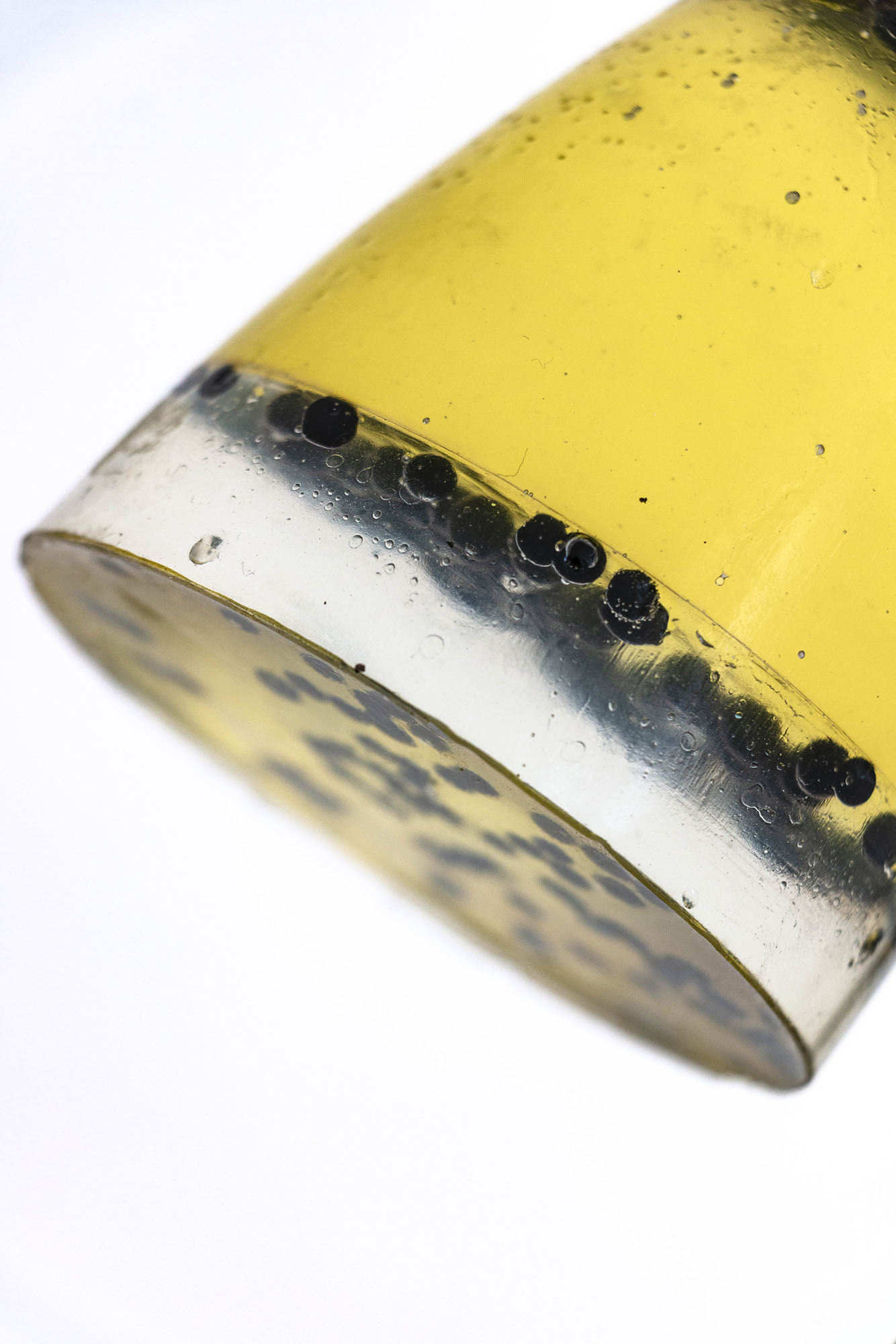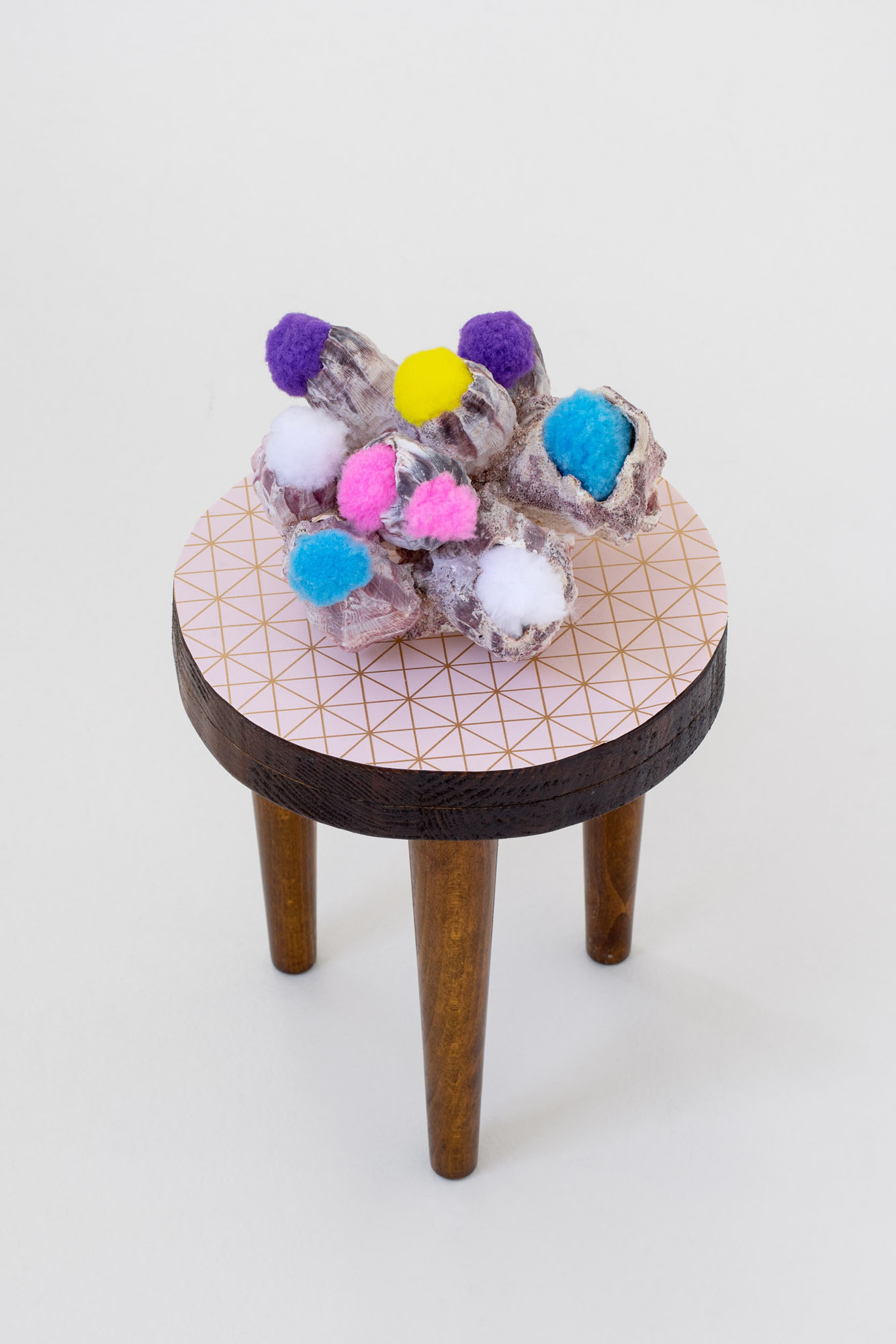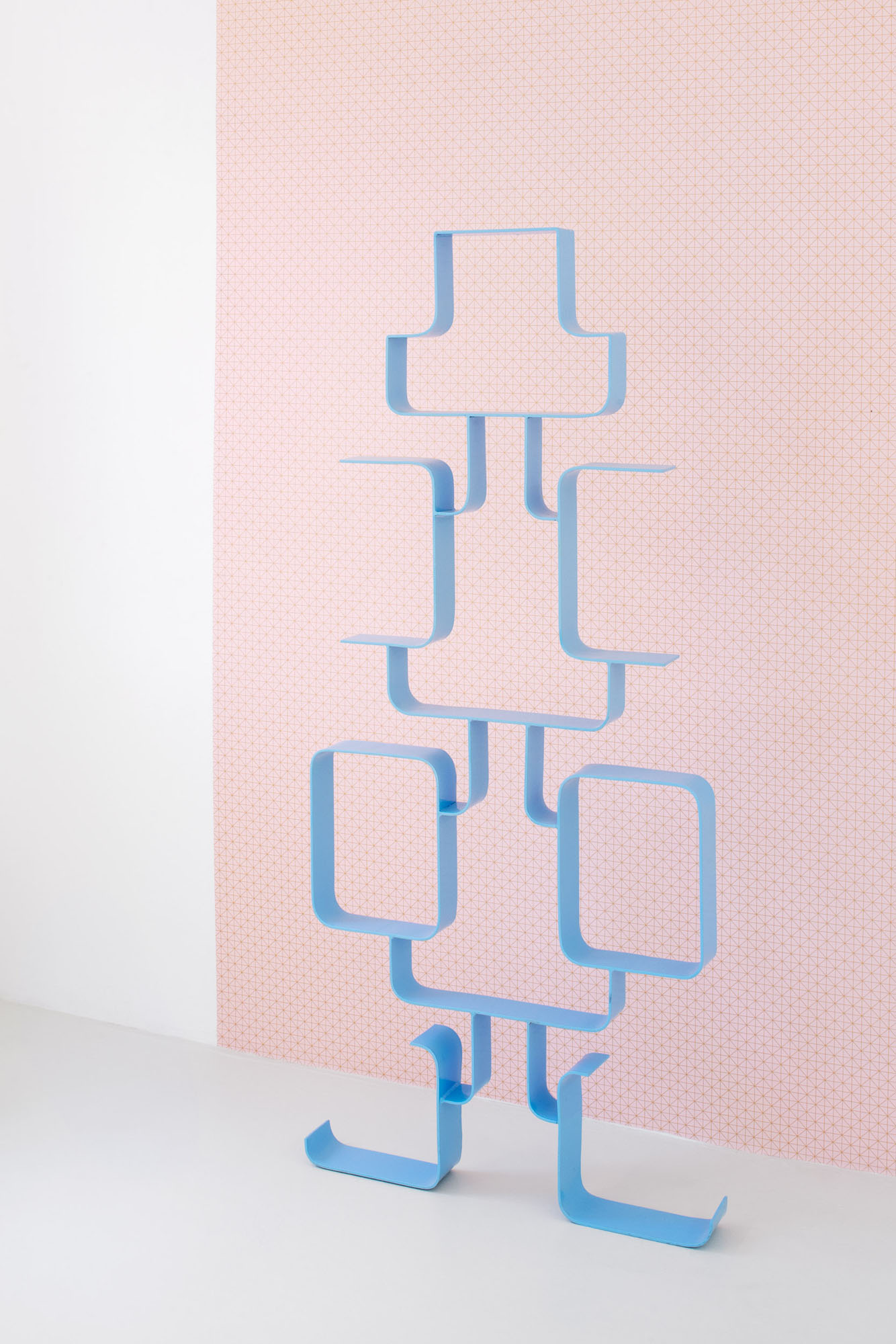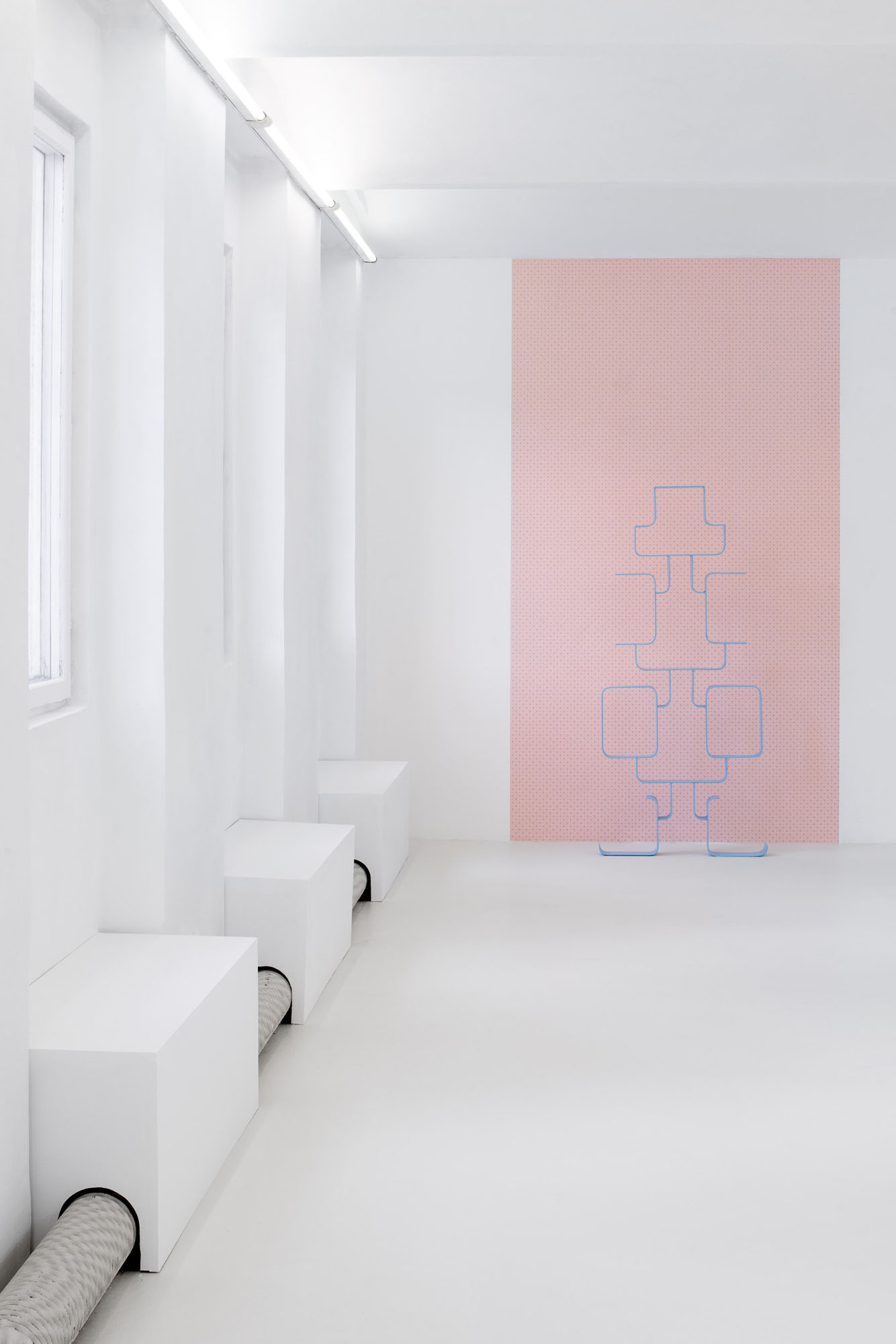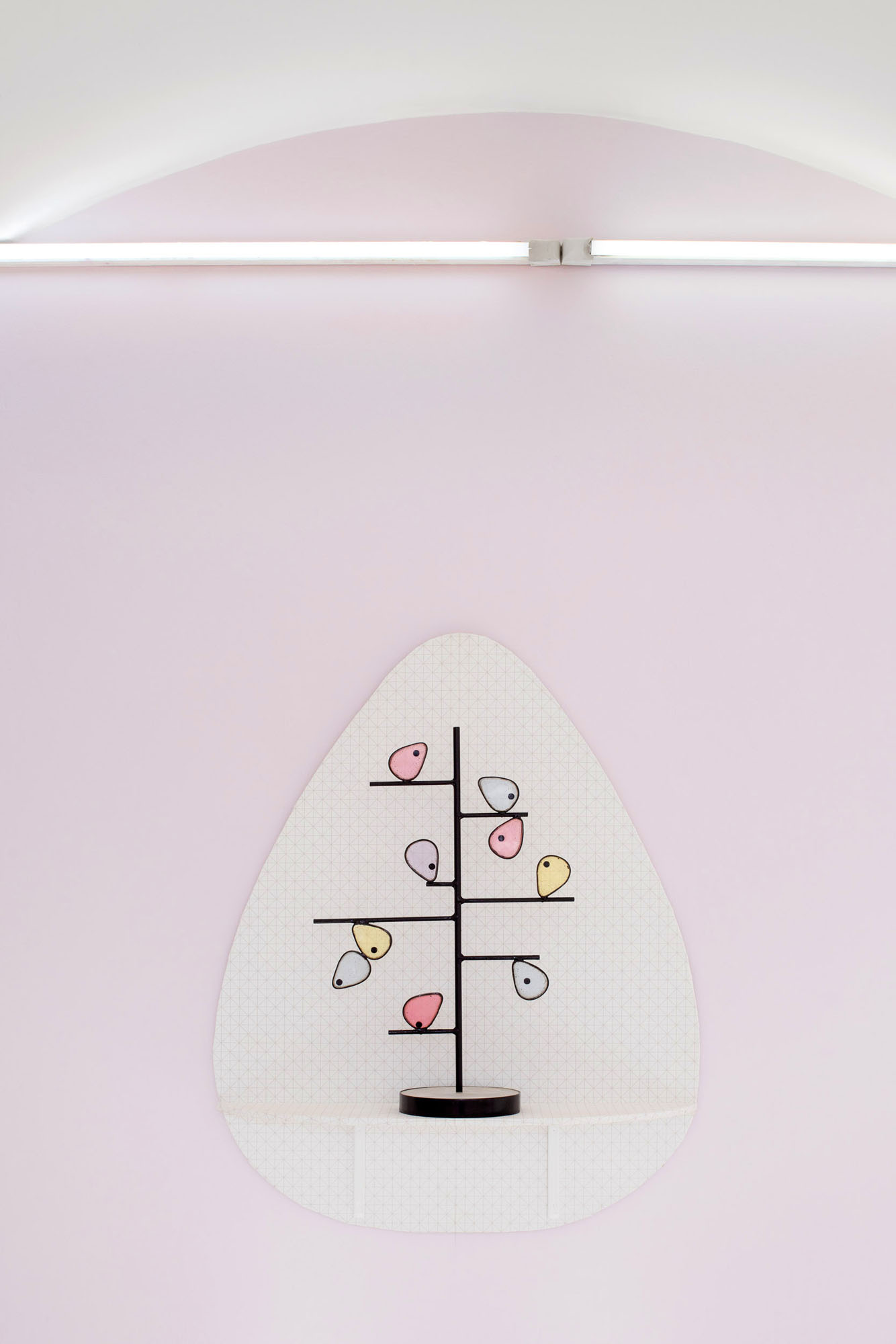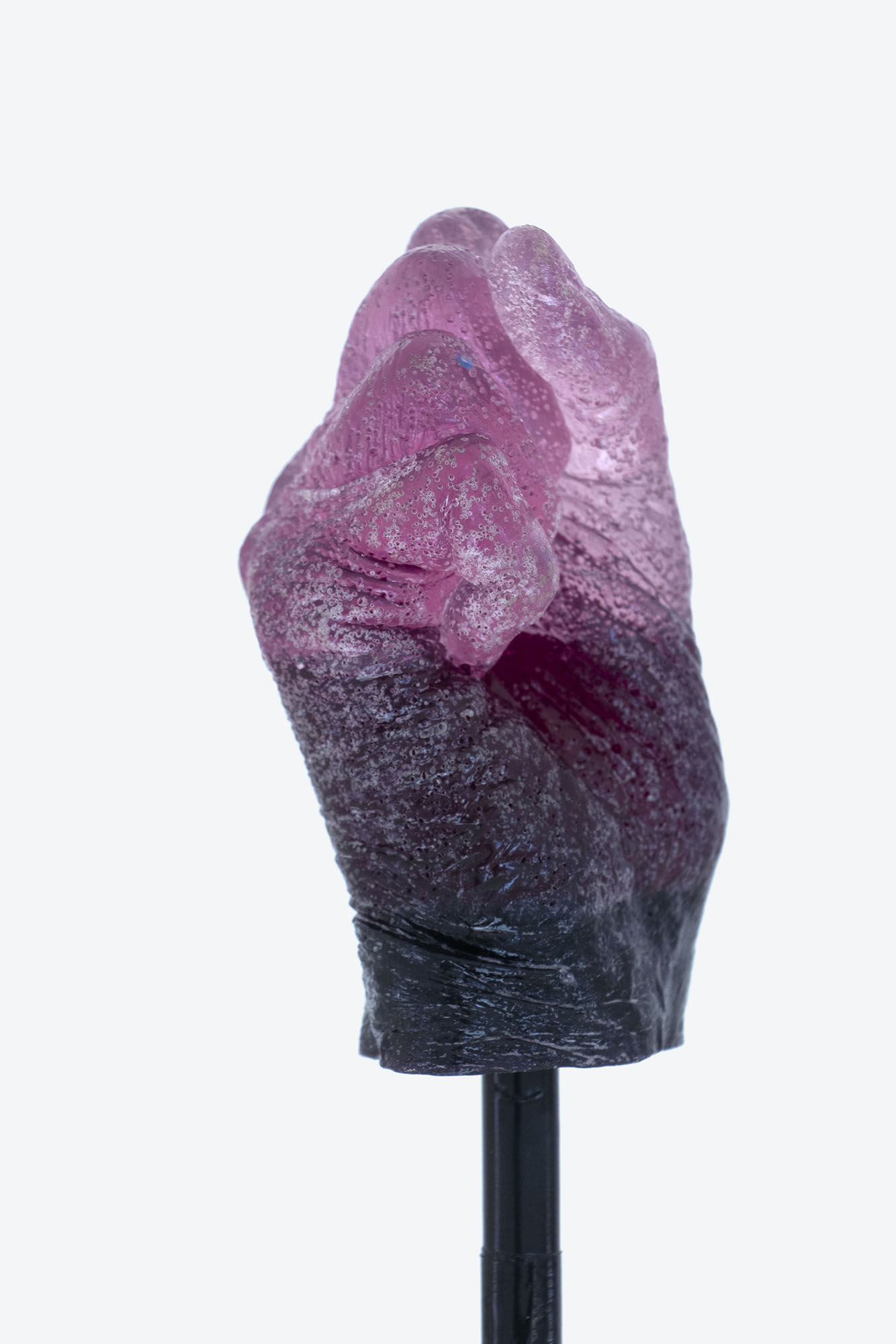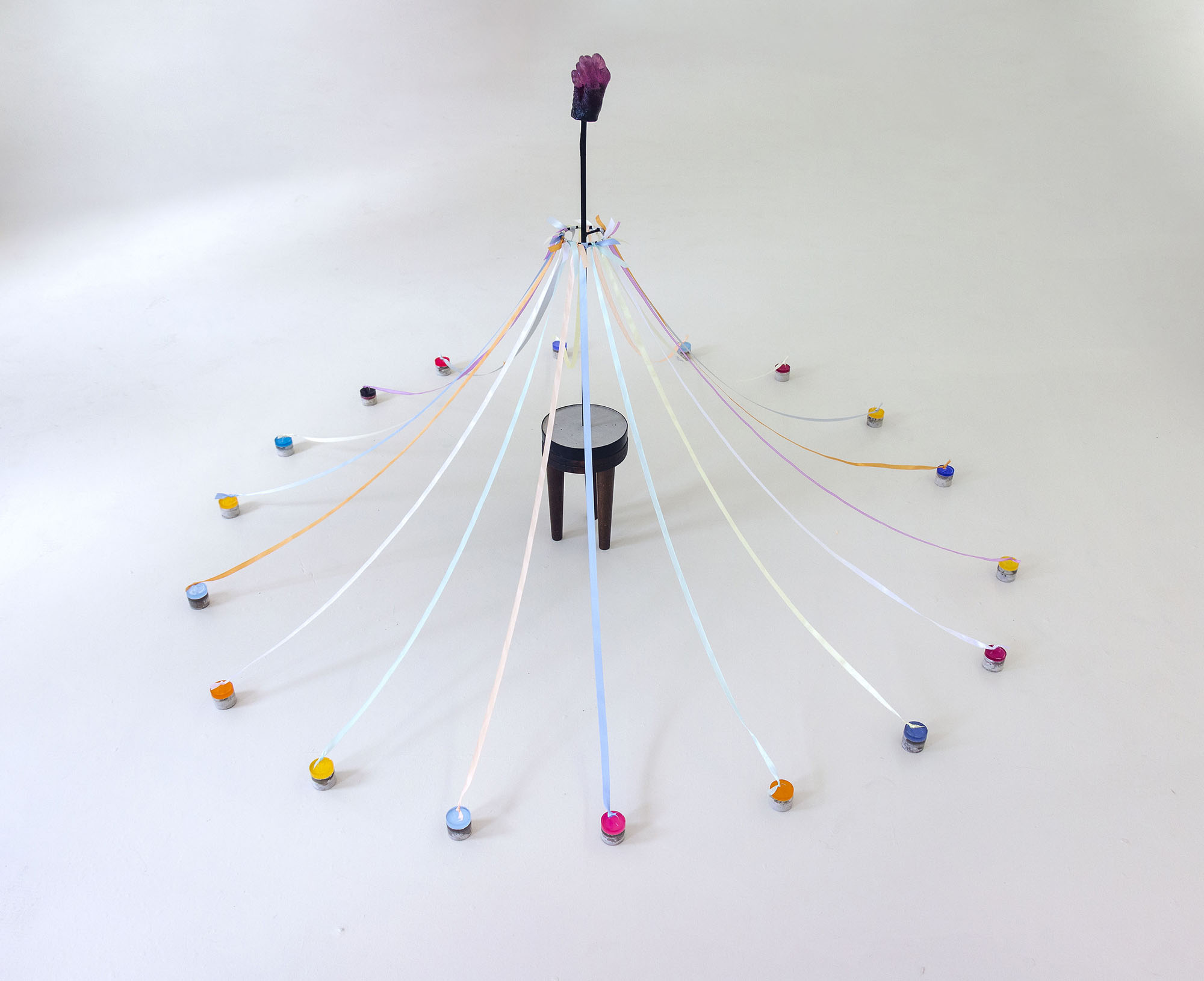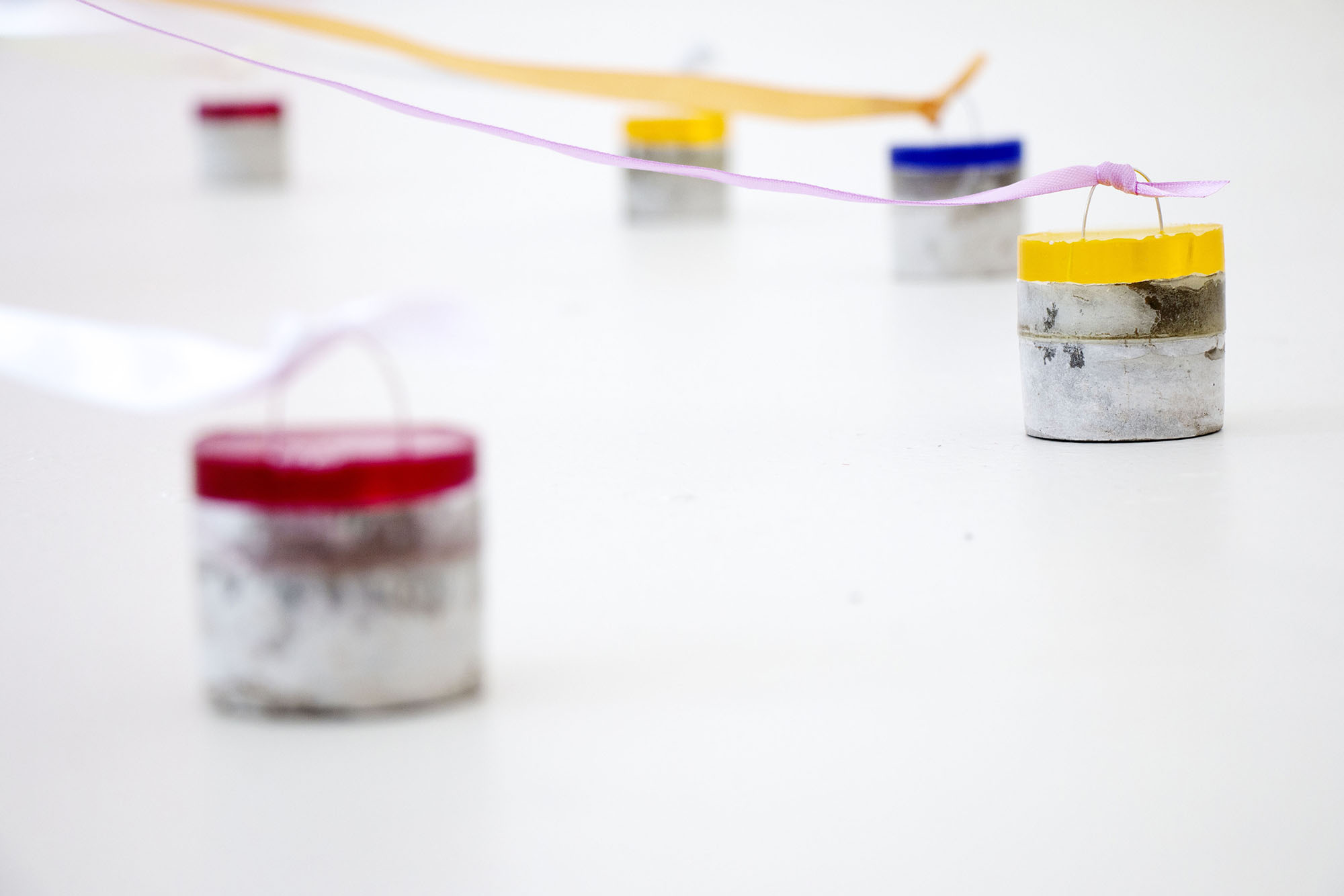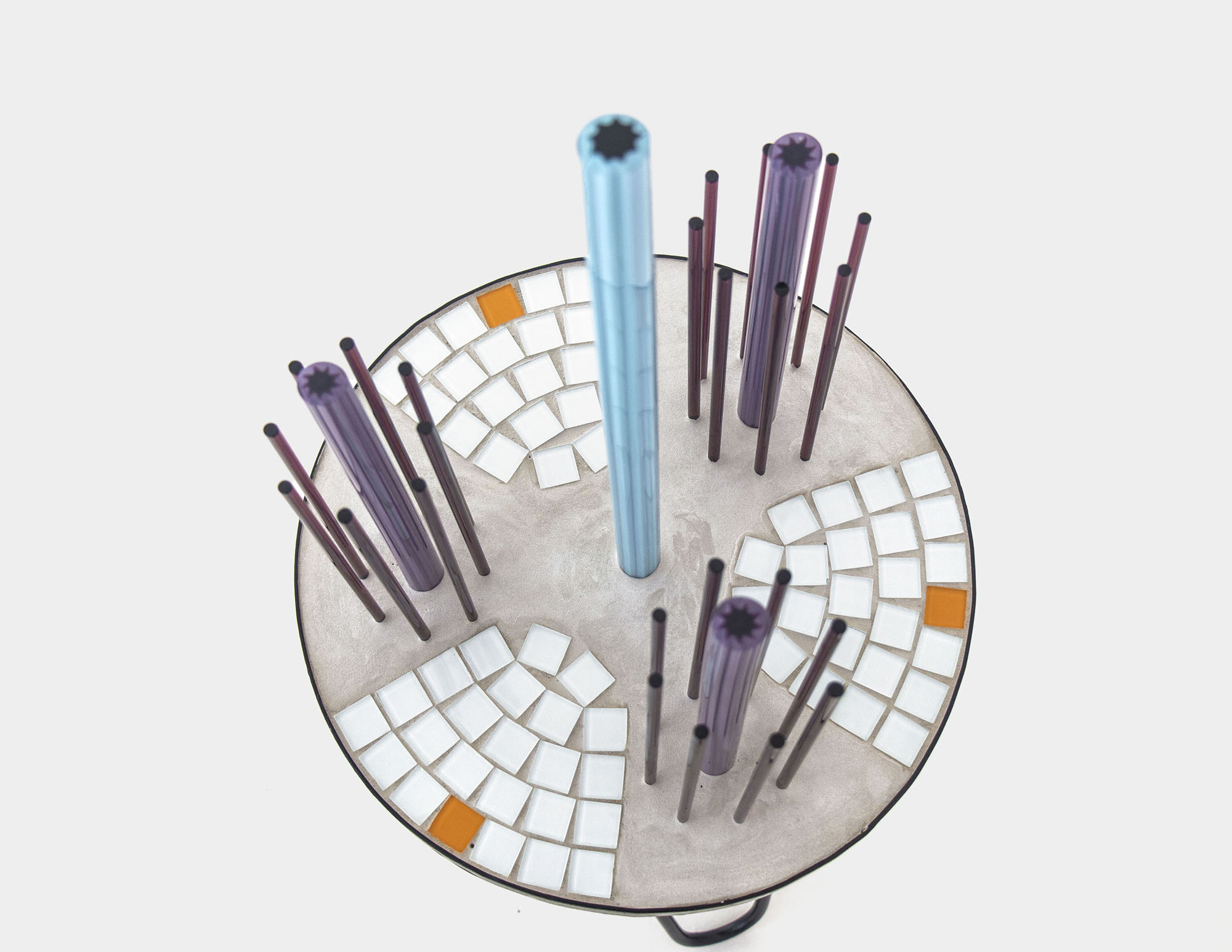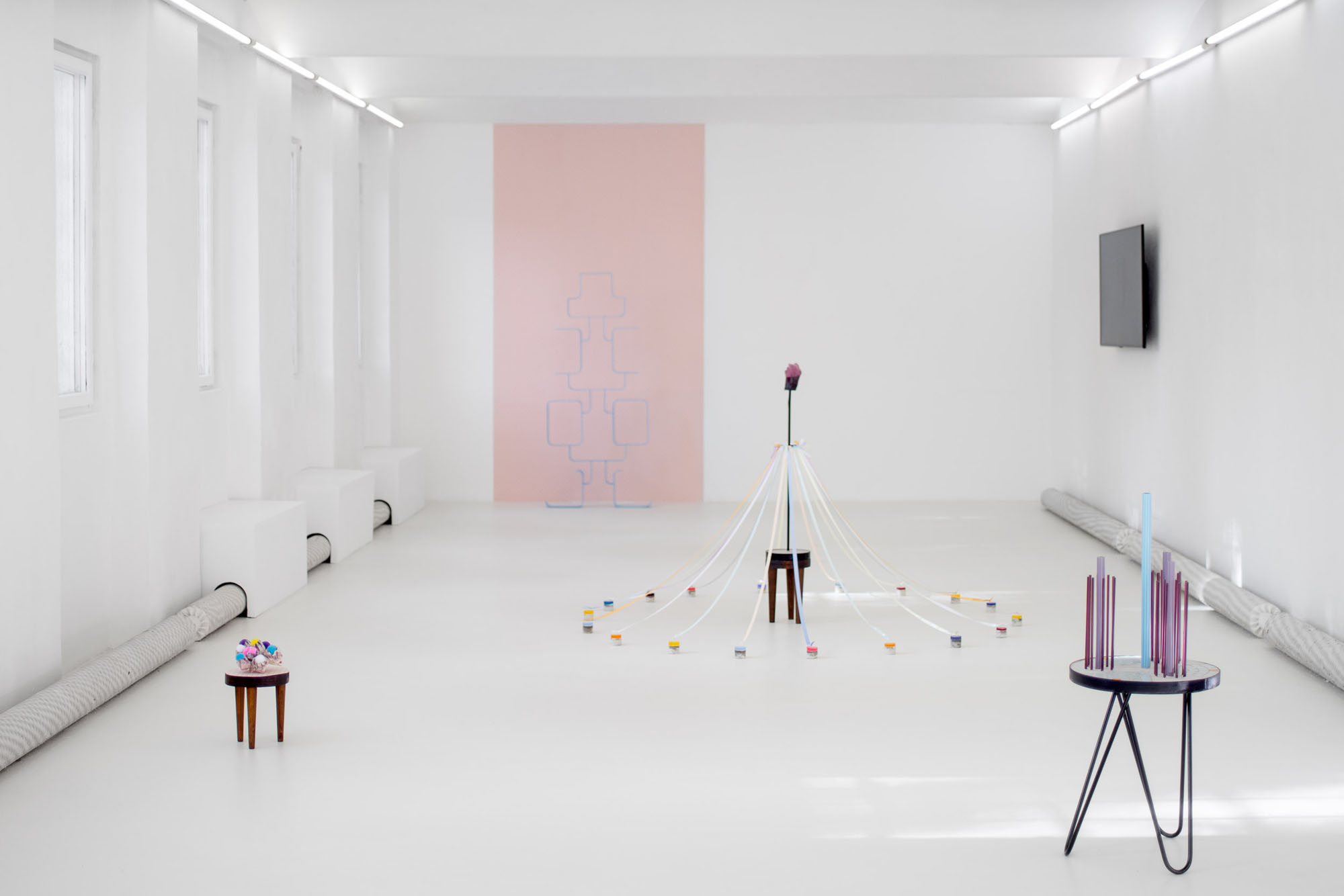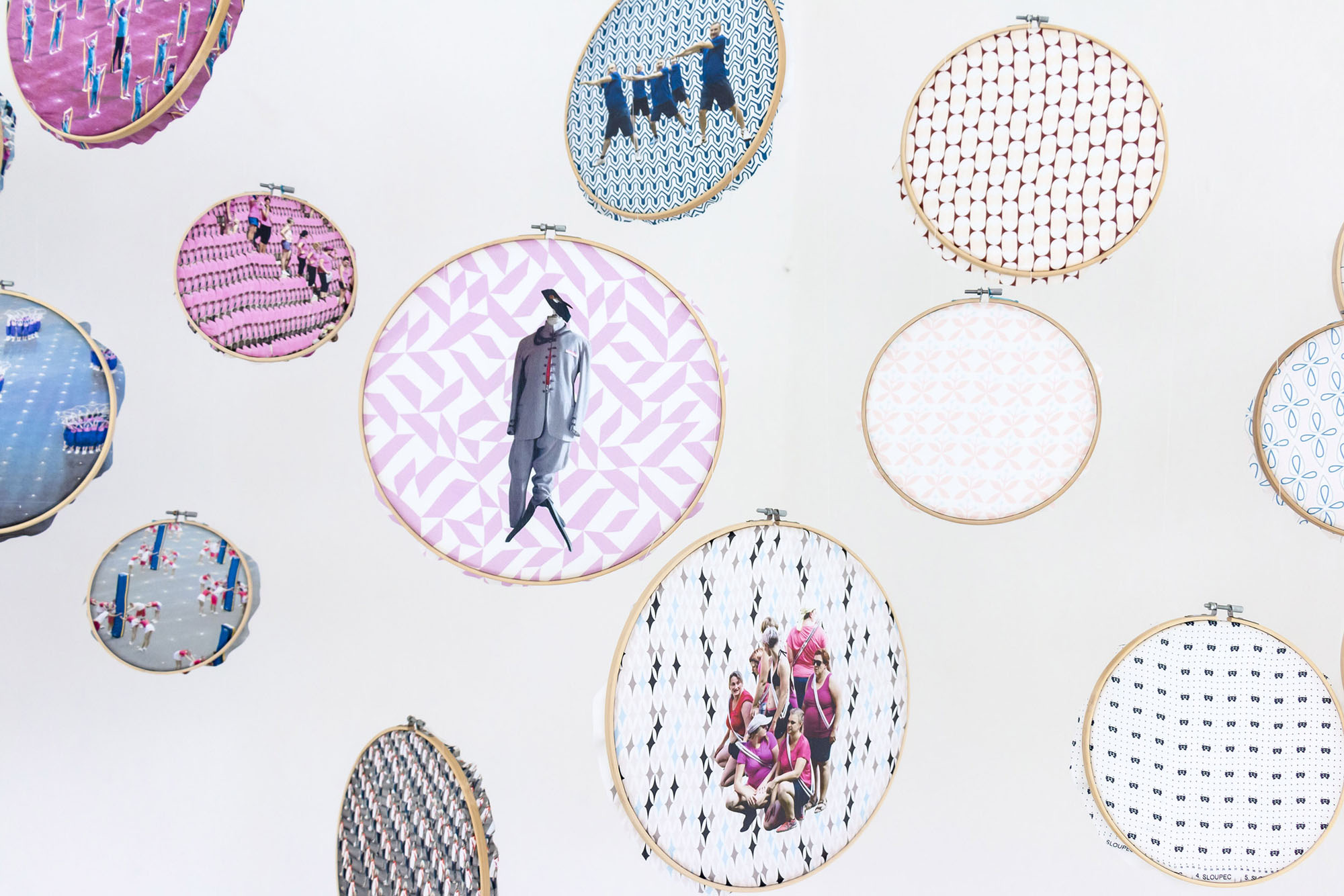Artist: Markéta Magidová
Exhibition title: Loop infinity down to side
Curated by: Caroline Krzyszton
Venue: Futura, Prague, The Czech Republic
Photography: all images copyright and courtesy of the artist and Futura
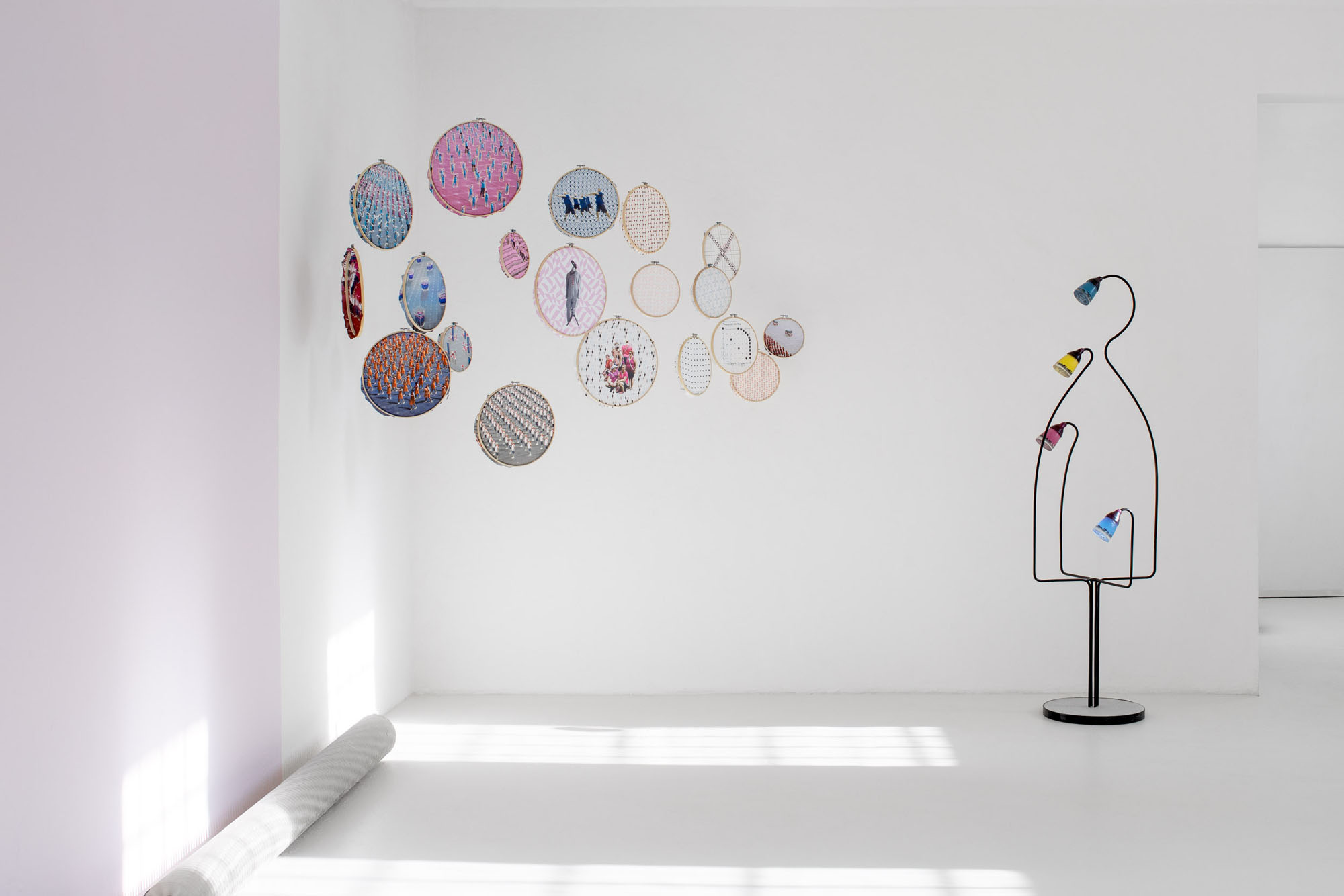
« Loop infinity down to side » is one of the movement descriptions that can be found in the exercise manual of Silhouettes Sokol group. Many of movements instructions one can read inside this manual are dated, described through archaic codes of language, mostly not understood by the young generation of performers still taking part in Sokol reunions and slets (Sokol gatherings) today.
Such as the strict formal aspect of transcription of mass choreographies into writing, which carries its own history and standards, Marketa Magidova explored for more than a year the operating processes and aesthetics of Sokol mass gymnastics in Czech lands.
In 2018, the artist attended the 16th all Sokol slet, a huge group performance of all-age gymnastics in Prague, intending to commemorate the centenary of the birth of Czechoslovakia. Initially created to defend the idea of an « independent, healthy and strong man », the Sokol was for decades a predominantly male activity. Yet today, the large majority of the participants perpetuating the tradition are older women.
One can question here whether this change of balance might be related to the undeniable change of role and importance of the Sokol in the society within the last decades. Despite the relative inconsistency of the ideology of Sokol in relation to its political context, its goal was always to illustrate the strength of individuals within a strong nation, to symbolize the power of a united collective under one figure or pattern of adhesion. However, in a post capitalist society where individuals’ prosperity is most well defined in opposition to the needs of the community, the Sokol lost its primarily humanistic ideology to become a rather old-fashioned tradition, usually and falsely connected with communist parades. A tradition now mostly held by women, who, in long interviews with the artist documented throughout the exhibition, seem to be practicing the Sokol sports for domestic or nostalgic reasons.
But is nostalgia always a cosmetic filter hiding a submissive behavior? Submission to old habits, old patterns, simpler shaping of reality? Or, on the opposite, aren’t these women brave enough to defy a rather popular idea of individualism, to carry old perspectives and still wishing to make a change, to tend to a better future?
In the main video work of this exhibition, Sokol protagonists are speaking while we can observe Ancistrus fishes in an aquarium. If the prehistoric look of the fishes’s anatomy might seem repulsive they in fact use their mouth to stick to the aquarium’s walls and « clean » them. At the end of the video, eventually, they will escape from the aquarium and its ruins, freed.
The study of pattern in the Sokol « mass ornaments », their choreographies and aesthetic references is in Marketa Magidova’s exhibition also put in relation with the aesthetics of Brussels design, the most popular wave of furniture and architecture design in the late 50’s, 60’s and 70’s in Czechoslovakia.
If this correlation between the two styles doesn’t seem obvious in a first historical lecture, through the installations it becomes obvious that Marketa Magidova not only drew certain lines between the movements of Sokol dancers and Brussels pieces of furniture, but she also put a finger on the power of theatricality and decor in the transmission of ideologies.
Indeed, the success of Brussels style was so great during the communist era (after its international triumph at the EXPO 58 in Brussels in 1958, where it presented Czechoslovak design as « modern » in opposition to the previous and stalinist social realism) that it spread all over the country for the next two decades. The new style even replaced the conservative socialist aesthetics in most homes and the Brussels style became, if not directly doctrine, a generally accepted standard, a glance of utopia within every citizen domestic landscape.
